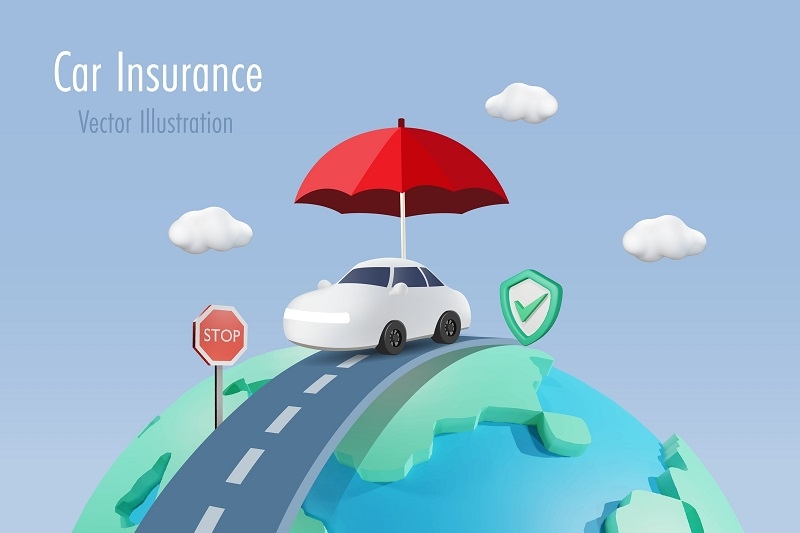
A road trip is perhaps the most unencumbered form of travel. Whether traveling along the coast, driving up twisting hill roads, or running after sunsets across deserts, the experience is exhilarating and unsure. But before you crank up the tunes and rev up the engine, there is one important step you should not neglect—verifying your temporary car insurance and cross-country coverage for road trips.
It's easy to get carried away in planning stops, snacks, and Spotify playlists, but heading out unprotected can be devastating. From a fender-bender to an unexpected breakdown in the middle of nowhere, the right insurance can turn a disaster into a manageable situation.
Let's jump into the most crucial checks and considerations in regard to vehicle insurance for road trips that every road tripper needs to do in order to remain safe and insured.
Begin by getting out your auto insurance policy. Don't just check if it is active. You must check if your road trip vehicle insurance covers aspects such as third-party liability, collision protection, medical expenses, and roadside assistance.
Most drivers wrongly assume their standard policy is comprehensive. But if your policy is basic liability, you may not be covered in the event your car is damaged during the trip or you are driving in an unfamiliar area. For extended travel, especially over state lines, you may need to see if your insurance is cross-country.
Your insurance company may also exclude out-of-state accidents, acts of nature, or even rental vehicle damages. If any of these conditions pertain to your trip, it's a good idea to speak with your insurance agent well before the trip.
If you're borrowing a friend's vehicle, renting one, or even purchasing a car just to make the trip, temporary car insurance is something to consider. These policies are meant just for cases where long-term insurance isn't required, but some minimal protection is still vital.
Let’s say you’re flying to one city and then driving across states in a rented SUV. Many rental companies offer their own insurance, but it may be expensive or limited. Getting third-party temporary car insurance might be a more affordable and comprehensive option. Plus, it adds peace of mind when driving an unfamiliar vehicle over long distances. Some short-term policies even include breakdown service and other travel protection benefits, which makes them perfect for road trips.
Road trips send us far and wide beyond state borders. But what if your policy doesn't cover accidents that take place in another state?
That's why it's critical to ensure your policy includes cross-country travel. Major carriers do this by default, but not necessarily all of them.
For example, there are some states that demand extra paperwork or increased liability minimums. Make sure your policy automatically adjusts or that you're manually increasing it to comply with them.
Even the best-maintained cars can experience flat tires, dead batteries, or engine issues while driving for extended periods in diverse conditions. Breakdown cover as part of your insurance package can be a lifesaver—particularly if you're miles from a nearby garage. Some insurers package roadside assistance as part of their overall coverage, while others view it as an add-on.
These are not only convenient, they are long drive essentials that will turn a destroyed afternoon into just a brief interlude in your journey.
Most people associate travel protection with international trips, but it’s just as valuable for road trips. If your vehicle breaks down or you’re involved in an accident far from home, a solid travel insurance plan can help cover your lodging, meals, and even alternative transportation.
In addition, if your trip is to be for multiple days or includes high-risk activities (such as hiking or off-road travel), travel insurance might pay for emergency medical treatment or evacuation. Your basic health insurance can be inadequate in certain states or may not provide for air transport or ambulance transport. Therefore, even when traveling within your own country, including travel protection over your car insurance for road trips, makes it much safer for you.

If you are not the only driver, all other people who drive should be covered. Some policies only cover the main driver, so if someone else causes an accident while driving your car, this could create complications- or even worse, a denial of claim.
Weather conditions are a big factor in road trips, particularly in regions with snowstorms, landslides, or flash floods. Make sure your road trip vehicle insurance includes weather damage. Most comprehensive policies have acts of nature covered, but it is always safer not to take anything for granted.
If you're driving into mountainous areas or coastal roads, you'll want insurance to cover water damage, fallen objects, and maybe off-road accidents. This is tied to one of the most important long drive tips—always match your insurance plan to your itinerary, not your vehicle.
Before you depart, ensure you carry physical or electronic copies of:
You might not have coverage in remote locations, so make sure you download offline copies of these documents or store them in your glove box. And make sure friends or relatives have a copy of your plans, particularly if your journey goes through less populated regions. This action is more than paperwork—it's an insurance policy that underlines your travel protection strategy.
No two road trips are ever alike. A solo weekend excursion through national parks is quite different from a month-long family trek across the country. Your insurance policy should be, too.
Tailored policies may cost a little more upfront, but they’re much cheaper than out-of-pocket expenses after a mishap.
Road trips aren't spontaneous affairs—careful planning is called for. And a large part of that planning involves making sure your road trip vehicle insurance covers every potential curveball. That entails checking your existing policy, obtaining cross-country insurance, acquiring temporary car insurance if necessary, and taking breakdown cover and travel protection.
This content was created by AI